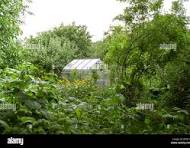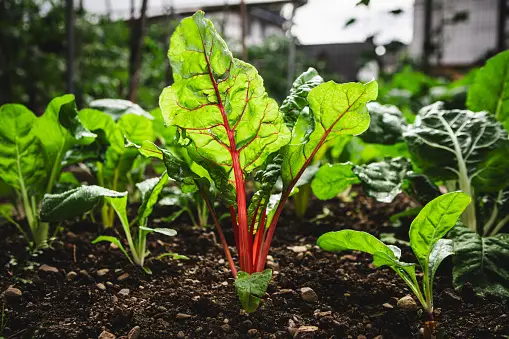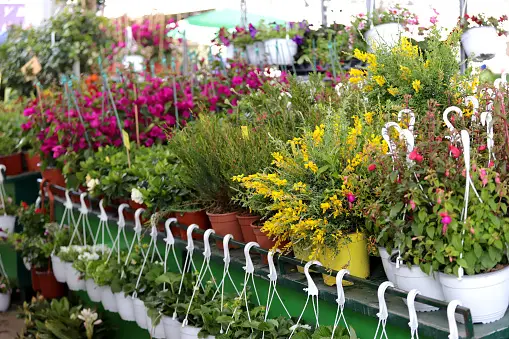Learn how you can deal with the problem of overgrown plants in your garden to keep it in a good condition.
Taming the Jungle: Restoring Order to Your Overgrown Kenyan Home Garden
The vibrant Kenyan sunshine and occasional downpours create a gardener's paradise. Plants flourish with a burst of life, leaves unfurl, and flowers bloom in a kaleidoscope of color. But sometimes, this rapid growth can spiral out of control, transforming your once-manicured garden into a tangled jungle. Fear not, fellow Kenyan gardener! This comprehensive guide equips you with the knowledge and strategies to reclaim control and transform your overgrown haven back into a flourishing oasis.
Understanding the Kenyan Context: Growth on Fast Forward
Kenya's unique climate presents both advantages and challenges for managing a home garden. Here's what you need to consider:
- Abundant Sunshine: Sunlight fuels plant growth, leading to denser foliage and potentially faster growth rates compared to cooler climates.
- Seasonal Variations: While Kenya experiences minimal changes in daylight hours, the rainy season can trigger a surge in plant growth. Be prepared to adjust your maintenance practices accordingly.
- Soil Conditions: Understanding the soil type in your garden, whether sandy, clay, or loam, is crucial. Different soil types retain moisture differently and influence plant growth patterns.
Diagnosing the Overgrowth: Identifying the Culprits
Before diving headfirst into taming the overgrowth, take a step back and assess the situation. Here are some factors to consider:
- Plant Species: Are specific plant varieties the main culprits? Vines, fast-growing shrubs, or certain vegetables like kales or collard greens can quickly become unruly if left unchecked.
- Planting Density: Were plants initially planted too close together? Overcrowding can stifle growth, create poor air circulation, and increase the risk of pests and diseases.
- Watering Practices: Inconsistent watering, particularly overwatering, can encourage excessive foliage growth at the expense of flowers and fruit production.
- Lack of Maintenance: Regular attention is essential for keeping a tidy garden. Neglecting tasks like pruning, deadheading, and weeding allows plants to grow unchecked.
Taking Action: A Multi-Phase Approach to Restoring Order
Once you've identified the potential causes, it's time to implement a plan to tackle the overgrowth. This can be broken down into three key phases:
Phase 1: Pruning and Thinning (Embrace the Shears!)
- Pruning Basics: Equip yourself with sharp, clean pruning shears or loppers. Always prioritize safety when using these tools. Start by removing dead, diseased, or damaged growth. Prune branches back to healthy buds, encouraging new growth in the desired direction. Research the specific pruning requirements of each plant variety in your garden. Some flowering plants benefit from strategic pruning to promote bushier growth and enhance flower production.
- Thinning the Ranks: For densely planted areas, consider thinning out some plants to improve air circulation and allow remaining plants to thrive. This might involve removing entire plants or selectively thinning out crowded areas. Transplant thinned plants to other areas of your garden, share them with friends or neighbors, or compost them if they are diseased.
Phase 2: Weeding and Mulching (Banishing Unwanted Guests)
- Weed Warfare: Persistent weeds compete with your desired plants for water and nutrients. Hand-pulling weeds is the most effective method for controlling them, especially for organic gardens. For stubborn weeds, utilize natural weed control methods like boiling water or vinegar solutions. Be mindful of using herbicides, as they can harm desired plants and pollinator populations.
- Mulch Magic: Adding a layer of organic mulch around your plants after weeding provides several benefits. Mulch helps suppress weed growth by blocking sunlight from reaching weed seeds. It also retains moisture in the soil, reducing the frequency of watering needed, and moderates soil temperature, protecting roots from extreme heat. Use materials like grass clippings (ensure they are weed-free), shredded bark, composted leaves, or even sisal hemp for mulch. Apply mulch around the base of your plants, leaving a few inches of space around the stem to prevent rot.
Phase 3: Addressing Underlying Issues (Preventing Future Overgrowth)
Restoring order to an overgrown garden is a rewarding experience. However, the key to long-term success lies in preventing overgrowth from happening again. This phase focuses on creating a sustainable garden ecosystem and implementing practices that encourage healthy, controlled growth.
1. Understanding Your Soil: The Foundation of a Healthy Garden
The type of soil in your garden significantly impacts plant growth. Here's how to optimize your soil for healthy, controlled growth:
-
Soil Testing: Conduct a simple soil test to determine the pH level and nutrient content of your soil. Soil testing kits are readily available at most garden centers in Kenya. Knowing your soil's composition allows you to:
- Adjust pH: If your soil is too acidic or alkaline, add amendments like lime to raise the pH or sulfur to lower it. Aim for a slightly acidic pH (around 6.0-6.8) for most Kenyan vegetables and flowers.
-
- Nutrient Management: Based on the test results, incorporate organic amendments like compost, manure, or bone meal to improve soil fertility and provide essential nutrients for healthy plant growth.
- Improving Soil Drainage: Heavy Kenyan rains can lead to waterlogged soil, hindering root development and encouraging fungal diseases. If your soil is clay-heavy and drains poorly, consider amending it with sand or organic matter like compost to improve drainage. Raised garden beds can also be a good option for overcoming drainage issues.
2. Planting with Purpose: Choosing the Right Plant for the Right Place
Planting plays a crucial role in preventing future overgrowth. Here are some key considerations:
- Research Plant Requirements: Research the mature size and growth habit of each plant before purchasing it. Select plants suitable for the available space in your garden. Avoid planting fast-growing varieties too close together.
- Spacing is Key: Spacing plants according to their recommended spacing requirements allows for proper air circulation, prevents overcrowding, and encourages healthy growth. Overcrowding not only leads to tangled foliage but also increases the risk of pests and diseases.
- Consider Plant Companions: Companion planting involves strategically placing different plant varieties near each other to benefit from their presence. For example, some plants attract beneficial insects that prey on garden pests, while others provide shade or act as natural weed suppressors. Research companion planting strategies suitable for Kenyan gardens.
3. The Art of Maintenance: Regular Care for a Thriving Garden
Regular maintenance is essential for promoting healthy growth and preventing overgrowth:
- Pruning: Regular pruning throughout the growing season encourages bushier growth, promotes flower and fruit production, and maintains the desired size and shape of plants. Research the specific pruning requirements for each plant variety in your garden.
- Deadheading: Removing spent flowers (deadheading) encourages some plants to produce more blooms throughout the growing season.
- Weeding: Regular weeding prevents weeds from competing with your desired plants for water and nutrients. Hand-pulling weeds is the most effective method for small gardens, while natural weed control methods like boiling water or vinegar solutions can be used for stubborn weeds.
4. Watering Wisely: Finding the Balance
Watering practices significantly impact plant growth and can contribute to overgrowth. Here's how to strike the right balance:
- Deep Watering: Water deeply and infrequently, allowing the soil to dry slightly between waterings. This encourages roots to grow deeper in search of moisture, leading to stronger and more resilient plants. Shallow, frequent watering promotes shallow root growth and can make plants more susceptible to drought stress.
- Observe Your Plants: Learn the water requirements of your specific plants. Some plants, like vegetables, require more frequent watering, while succulents and drought-tolerant plants need less frequent watering. Observe your plants for signs of thirst (wilting leaves) before watering.
5. Embracing Organic Practices:
Creating a healthy garden ecosystem naturally discourages pests and diseases, preventing the need for harsh chemicals. Here are some organic practices to consider:
- Composting: Composting kitchen scraps and yard waste creates nutrient-rich organic matter that improves soil structure and fertility. Composted materials also help retain moisture in the soil, reducing the frequency of watering needed.
- Beneficial Insects: Attract beneficial insects like ladybugs and lacewings to your garden by planting flowering herbs or keeping a small dish of sugar water near your plants. These insects are natural predators of common garden pests.
- Neem Oil and Other Natural Solutions: For minor pest outbreaks, consider using natural solutions like neem oil spray or insecticidal soap solutions. These options are less harmful to the environment and beneficial insects compared to traditional pesticides.
Conclusion
Restoring order to an overgrown Kenyan garden is a journey of discovery and transformation. It is not just about taming the jungle but fostering a thriving ecosystem that promotes healthy plant growth and minimizes future maintenance. Understanding your soil, planting with purpose, and implementing regular care practices are the cornerstones of a sustainable garden. By embracing organic practices and encouraging beneficial biodiversity, you create a balanced and harmonious environment for your plants to flourish.
Remember, the process of creating a beautiful and manageable garden unfolds over time. Celebrate your progress, learn from your experiences, and adjust your approach as needed. Embrace the abundant sunshine and seasonal variations that define Kenya's unique climate. Utilize readily available resources like local nurseries and gardening communities for knowledge and support.
Beyond the practical benefits, nurturing a garden is a deeply rewarding experience. Imagine the satisfaction of harvesting homegrown vegetables and herbs, the calming presence of vibrant blooms, and the soothing sound of buzzing pollinators. Your garden can become a personal sanctuary, a space for relaxation and connection with nature.
So, pick up your pruning shears, grab a bag of compost, and embark on this rewarding journey. With dedication and the knowledge gleaned from this guide, you can transform your overgrown haven into a flourishing and sustainable paradise – a testament to the beauty and bounty that Kenya's rich soil and abundant sunshine have to offer.


























